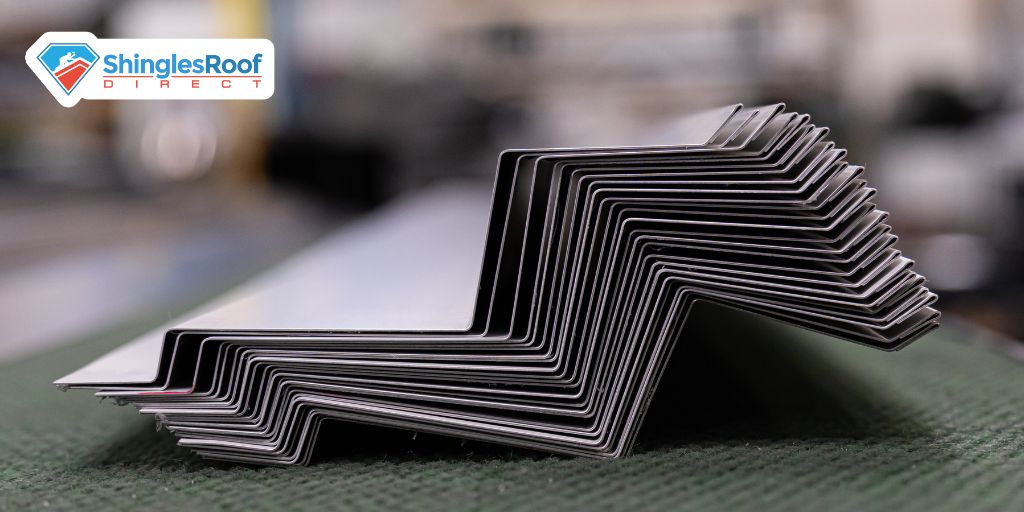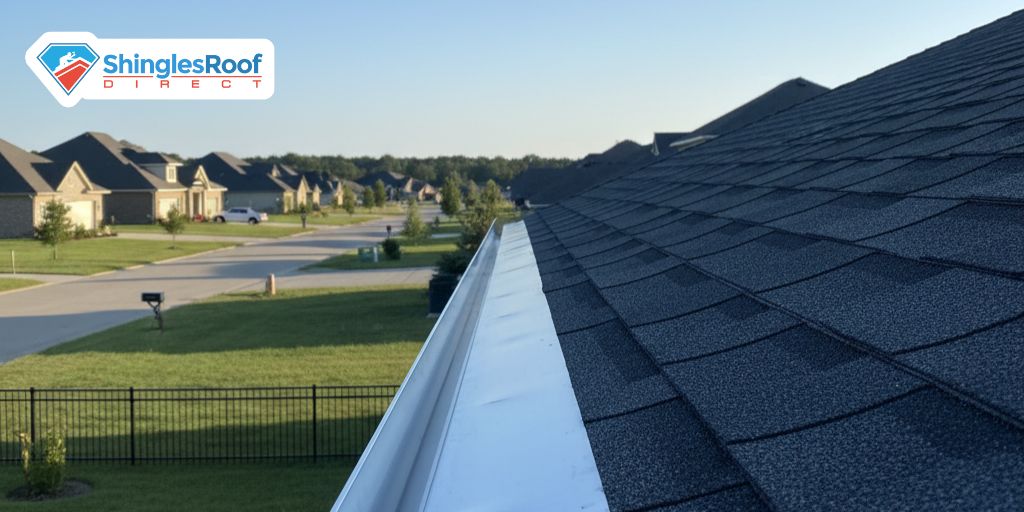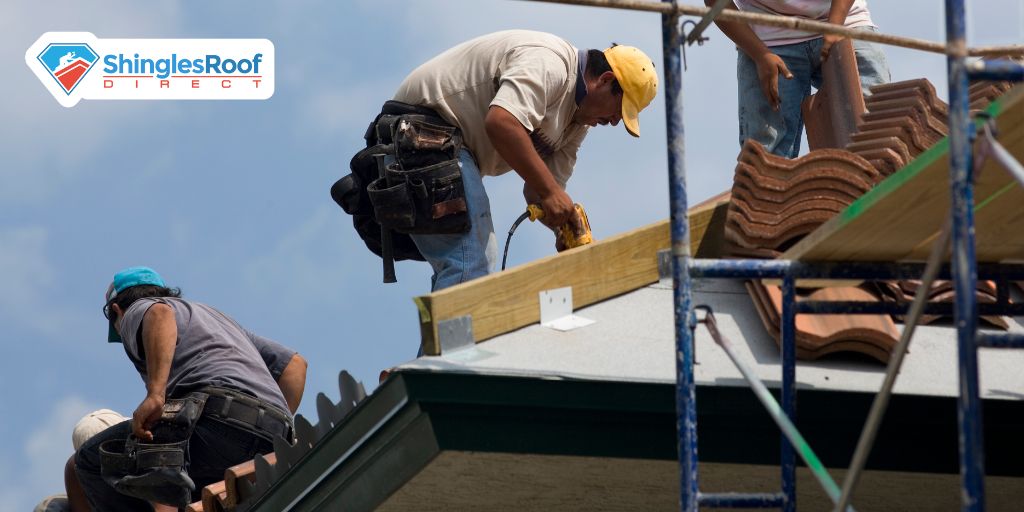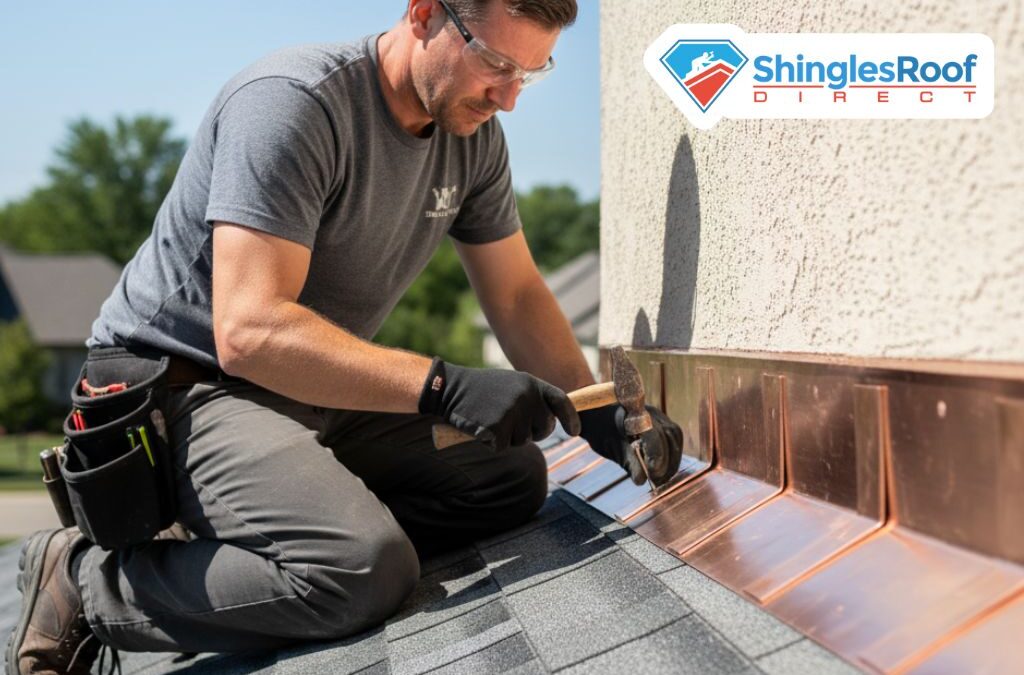Created by Shingles Roof Direct
When most homeowners think about roof care, they imagine shingles or tiles, not the thin strips of metal that quietly protect their home. Yet, roof flashing is one of the most important elements of your roofing system. Without it, rainwater can sneak into hidden corners, eventually leading to leaks, mold, and even foundation damage. Ignoring flashing is like leaving your home’s defense system wide open.
The truth is, water damage is costly and stressful. It not only ruins your roof but can spread to your walls, insulation, and ceilings. The good news? A simple solution already exists: roof flashing. Installed in key areas, flashing directs water away from vulnerable spots, keeping your home dry and safe year-round. By learning how it works and knowing when it needs attention, you can prevent major repair bills and protect your biggest investment.
Table of Contents
- Roof Flashing Basics
- How Roof Flashing Protects Against Water Damage
- Types of Roof Flashing Every Homeowner Should Know
- Signs Your Roof Flashing Needs Repair or Replacement
- Professional Installation and Maintenance Tips
- Final Thoughts: Why Roof Flashing Is Your Roof’s First Line of Defense
- Quick FAQs About Roof Flashing and Water Damage
Roof Flashing Basics
Roof flashing may look like small strips of metal, but it plays a massive role in how your roof performs. It creates a watertight seal where shingles alone cannot, acting as a barrier against rain, wind, and snow. Without flashing, even a brand-new roof would be vulnerable to leaks within months.
Different materials are used for flashing, including aluminum, copper, and galvanized steel. Each offers durability, but their effectiveness depends on your home’s design and climate. Knowing where flashing belongs and what it’s made of will help you appreciate how essential it is in keeping your home protected.
What Is Roof Flashing and Why Is It Important?
Roof flashing guides water away from vulnerable points like chimneys, skylights, and roof valleys. By sealing these areas, it prevents leaks that can otherwise seep into ceilings and walls. Even with perfectly laid shingles, gaps exist where water can sneak in, and flashing fills those gaps. In many ways, flashing is like a guardrail for your roof. It keeps water moving in the right direction—down into gutters and away from your home. Without it, water can stagnate, seep into joints, and cause structural issues over time. This makes flashing just as critical as the shingles themselves.
Common Materials Used in Roof Flashing (Aluminum, Copper, Steel)
Most flashing today is made of aluminum because it’s lightweight, cost-effective, and resistant to rust. Copper flashing, while more expensive, offers unmatched durability and can last for decades. Galvanized steel is another popular choice, combining strength with affordability, though it requires proper coating to resist corrosion. Each material offers unique benefits. For example, copper develops a natural patina over time, adding both protection and character. Aluminum, on the other hand, is easy to shape and install, making it ideal for homes with complex rooflines. Choosing the right material depends on budget, climate, and long-term goals.

Where Flashing Is Installed on a Roof
Flashing isn’t placed randomly; it’s strategically installed in high-risk areas where leaks often occur. These include valleys where two slopes meet, around chimneys and skylights, and along eaves or rakes. Anywhere the roof meets a vertical surface—like a wall or vent—flashing is required.
💡 Think of it as a second layer of armor. While shingles protect wide surfaces, flashing defends the seams and edges. This layered approach ensures your entire roof system works together to resist water intrusion.
RELATED: Bringing the Sky Inside: A Guide to Navigate Skylight Installation
How Roof Flashing Protects Against Water Damage
When storms roll in, your flashing acts as a silent protector. Its angled design directs rainwater toward gutters instead of letting it seep into your roof. By working with gravity, flashing ensures water flows away from weak spots rather than sitting in them.
Beyond everyday rain, flashing also safeguards your roof against heavy snow and wind-driven water. Without it, melted snow or storm runoff could easily invade your attic or living spaces. In short, flashing is your roof’s insurance policy against water damage.
RELATED: Roof Inspection Charlotte NC: Preventing Costly Water Damage and More
Directing Rainwater Away from Vulnerable Areas
Flashing channels water away from intersections where shingles alone can’t provide full coverage. For instance, valleys or edges often collect runoff, and flashing ensures it gets diverted properly. This prevents pooling water, which can eat away at roofing materials over time. It works like a funnel system—catching excess water and guiding it to safe pathways. By keeping moisture moving, flashing helps preserve not only your roof but also your siding and gutters.
Preventing Leaks Around Chimneys, Skylights, and Vents
Chimneys, skylights, and vents are some of the most common sources of roof leaks. These structures create gaps that are difficult to seal with shingles. Flashing wraps around them, creating a tight barrier that keeps rain out. This extra shield is critical in stormy weather. Even the smallest crack can allow water inside, leading to damage that often goes unnoticed until it becomes severe. Properly installed flashing ensures these features stay leak-free for years.
RELATED: Optimizing Home Comfort: A Guide to Residential Roof Ventilation Systems

Protecting Roof Valleys and Edges from Pooling Water
Roof valleys are natural collection points for rain. Without flashing, these areas would quickly become overwhelmed, leading to leaks and rot. Flashing reinforces valleys by creating a direct path for water to flow off the roof. Edges and eaves benefit, too. Flashing along these areas prevents water from slipping behind gutters or into the fascia board. This not only protects your roof but also preserves your home’s exterior.
Types of Roof Flashing Every Homeowner Should Know
Understanding the different types of flashing helps you see how they work together as a complete system. Each type targets a specific weak point, ensuring water can’t exploit hidden gaps. By learning these, you’ll know what to look for during inspections.
The three most common types are step flashing, valley flashing, and drip edge flashing. Together, they cover the most vulnerable parts of your roof and keep water damage at bay.
Step Flashing for Roof-to-Wall Intersections
Step flashing is used where the roof meets a vertical wall. Pieces are layered in a “step” pattern, guiding water down the slope and away from the wall. This prevents leaks from creeping inside the house where the roof and wall connect. Without step flashing, rainwater would run directly into siding gaps, leading to rot and interior damage. It’s one of the most important defenses for multi-story homes or those with dormers.
Valley Flashing for Sloped Roofs
Valley flashing is designed to protect the V-shaped channels where two slopes meet. These valleys naturally collect a large amount of water, so they’re highly vulnerable. The flashing provides a durable surface that directs the flow away efficiently. By reinforcing valleys, this flashing prevents water from seeping into overlapping shingles. It also reduces wear and tear on roofing materials in these high-stress zones.
Drip Edge Flashing for Eaves and Rakes
Drip edge flashing sits along the edges of your roof, ensuring water flows into gutters rather than seeping underneath shingles. It creates a clean line for water runoff, protecting fascia boards and siding.
👉 Best for: directing rain into gutters.
👉 Prevents: rot, mold, and fascia damage.
👉 Extends: roof lifespan by stopping hidden leaks..
RELATED: Low Maintenance Siding for Homes: Best Options for Long-Lasting Protection

Signs Your Roof Flashing Needs Repair or Replacement
Even the strongest flashing can wear out over time. Weather, age, and poor installation can weaken its ability to protect your roof. Knowing the warning signs helps you act quickly before small issues turn into expensive repairs.
Most problems show up as visible damage or leaks inside the home. By keeping an eye out for these signs, you can schedule repairs early and avoid larger headaches down the road.
RELATED: The Cost of Compromise: The Consequences of Poor Roof Installations and Repairs
Visible Rust, Cracks, or Loose Sections
Metal flashing is durable, but it isn’t invincible. Rust spots, cracks, or loose edges are all red flags. These weak points allow water to bypass the barrier, eventually leading to leaks. Regular inspections will reveal these issues before they worsen. If you notice bent or missing sections, it’s best to replace them promptly.
Water Stains or Leaks Inside the Home
One of the clearest signs of flashing failure is water stains on your ceilings or walls. Leaks may start small, but they can quickly spread through insulation and drywall. If stains appear after heavy rain, it’s a strong indicator that your flashing is compromised. Professional roofers can trace the source and repair it before the damage spreads further.
Frequent Gutter or Siding Issues
Problems with gutters and siding can sometimes point back to faulty flashing. If water bypasses flashing, it may flow behind gutters or down exterior walls. This leads to peeling paint, mold growth, or sagging gutters.
👉 Look for: warped siding, overflowing gutters, and water trails.
👉 Address early: to stop structural damage.
👉 Call a pro: if issues persist even after cleaning gutters.
RELATED: Signs Your Vinyl Siding Might Be Ready for Renewal
Professional Installation and Maintenance Tips
Flashing only works if it’s installed correctly. Even small mistakes during installation can lead to leaks later. That’s why many homeowners rely on professional roofers to get the job done right. A properly installed flashing system will last for decades with regular care.
Beyond installation, routine inspections are key. Professionals can spot problems before they cause damage, saving you money in the long run. Preventive maintenance is always more affordable than emergency repairs.
RELATED: How Much Does It Cost To Replace Or Install A Roof?
Why Proper Installation Matters for Long-Term Protection
Improperly installed flashing is one of the leading causes of roof leaks. When flashing isn’t sealed correctly or overlaps are skipped, water can easily sneak through. This puts your entire roofing system at risk. Professional roofers understand how to layer flashing with shingles and seal it properly. Their expertise ensures flashing works as intended, offering lasting protection against water intrusion.
RELATED: Why You Should Work with One Roofing Contractor for Your Next Project

The Role of Regular Roof Inspections
Routine inspections help maintain flashing performance. Roofers look for loose sections, corrosion, or missing pieces during these check-ups. Early detection means minor fixes instead of major repairs. Ideally, roofs should be inspected at least once a year and after major storms. This keeps flashing and other roof components in top condition.
When to Call a Roofing Expert for Flashing Repairs
While small DIY fixes are possible, flashing repairs are best left to professionals. They have the tools, materials, and expertise to ensure proper sealing. Attempting repairs without training can make problems worse. If you see water stains, rust, or visible gaps, don’t wait. Call a roofing expert to inspect and repair the flashing before damage spreads.
RELATED: Securing Your Roof: Essential Inquiries for Hiring a Reliable Roofing Company
Final Thoughts: Why Roof Flashing Is Your Roof’s First Line of Defense
Roof flashing may not be the first thing you notice on your roof, but it is one of the most important. By sealing vulnerable areas, it prevents leaks and keeps your home safe from water damage. Without it, even the strongest shingles cannot fully protect your home.
Regular inspections and timely repairs ensure your flashing continues doing its job. With the right materials and professional installation, flashing can last for decades, saving you money and stress. As with all roofing elements, prevention is far more cost-effective than repair.
Don’t Wait Until Water Damage Strikes
At Shingles Roof Direct, we specialize in roof flashing, roof repair, and complete roof replacements designed to keep your home safe from water damage. Our experienced team ensures every detail is handled with precision, so your roof can stand strong against North Carolina’s toughest storms. Schedule your free inspection today and let us help you extend the life of your roof.
🏠 Get a FREE over-the-phone estimate and personalized service that comes with the best warranties in the Carolinas.
📞 Call now at 704-320-1896 or Schedule Your Appointment Here let us help you extend the life of your roof.
Stop leaks before they start—protect your home with expert roofing care today!
Get to Know More About Us:
At Shingles Roof Direct, our mission is to provide homeowners with premium-quality roofing solutions that combine durability, affordability, and style. Not only are we local to the Carolinas, but we’re a family-owned company large enough to handle any job with expediency. We are committed to helping you protect your home with expert guidance, top-notch materials, and personalized service, ensuring your roof stands strong and looks beautiful for years to come.
Quick FAQs About Roof Flashing and Water Damage
1. What is roof flashing and why is it important?
Roof flashing is a thin strip of metal, usually aluminum, copper, or steel, that seals roof joints and directs water away from vulnerable areas like chimneys, skylights, and valleys. It’s important because it prevents leaks and protects your home from costly water damage.
2. Where is roof flashing installed on a home?
Roof flashing is typically installed in high-risk areas of the roof, such as valleys, around chimneys, skylights, roof edges, and vents. These spots are more likely to let water in, and flashing provides a watertight barrier to keep moisture out.
3. Can roof flashing be replaced without replacing the whole roof?
Yes, roof flashing can be repaired or replaced without replacing the entire roof. Professional roofers can remove damaged flashing and install new sections to restore water protection, saving homeowners money and extending roof life.
YOU’LL ALSO LIKE:
SEO by Microhound

